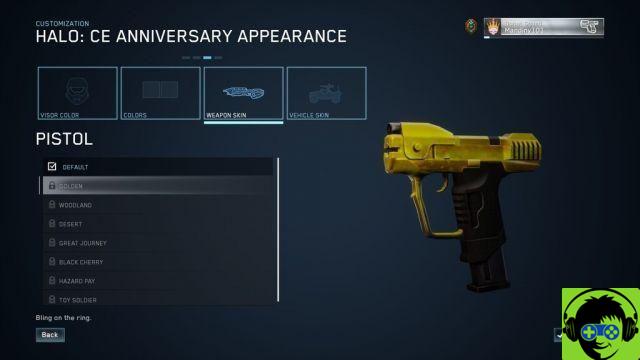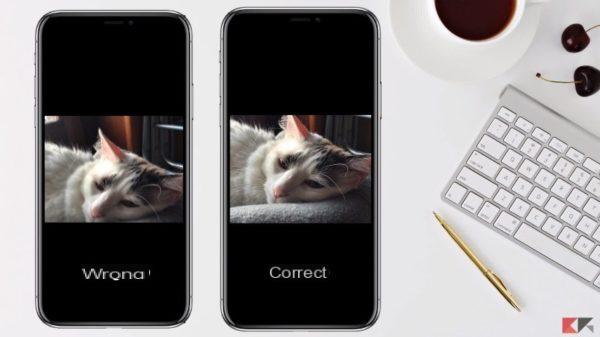Which Android smartphone to buy? But above all, how do I understand which one is the most suitable for me? Questions to which it is difficult to give an univocal answer but which each of us has asked ourselves at least once in our life when changing phones.
Checking the buying guides is a good start, on our pages you can find the one to the best smartphones (on TuttoTech) always updated or the specific one to the best Android smartphones, but there is always the problem of having to start somewhere, especially if you are not of the great technology experts.
With this in-depth analysis we will try to give you a useful tool to orient yourself, a real instruction booklet to follow before buying a new smartphone, to save money and not have nasty surprises out of time, take advantage of it and share it with anyone who asks you for advice.
Index:
- Don't rush: information is power
- do not establish a budget first;
- buy online or in store?
- what does the market offer?
- Now establish a budget;
- What do you need? The rule of 3;
- Design and Materials;
- Photographic sector;
- Performance;
- Technical specifications;
- Dimensions;
- Multimedia;
- Software & Updates;
- Brand;
- Modding;
- Accessories;
1. Don't rush: information is power
Always valid little advice: do not rush. Okay if your smartphone has abandoned you and you need it immediately you don't have much choice but to speed up the times, but if you were lucky and your idea to change smartphone has matured over time, then give yourself a few more weeks to wait for the right offer. It will come for sure, especially if you are undecided between a small range of proposals and not focused on a single product.

Second advice always valid: ask yourself if it is really the case to change the smartphone. A new device will generally require an economic effort, it will have a certain environmental and social impact, so evaluate it with conscience. Keep in mind that there is always a bit of excitement to the idea of a new purchase, add marketing and you will have a good chance of creating totally unjustified expectations, which will then be disregarded once you get the new product.
Follow our buying guides, in particular TopSmartphone, our monthly updated column that will allow you to reduce the number of smartphones to choose from to a small number, is a way to avoid the stress of doing the bulk of the skimming and rely on the expert judgment of our editorial staff.
to. Don't set a budget first
Yes, we are not kidding, for us the first rule is not to establish a budget. This will be done later and only after having a concrete idea of one's needs and what the market can offer.
"How much do you want to spend?" It is the question that you will most often hear countered to your request for advice from a friend.
Well, know that it is a way to cut it short in giving you the advice, but if the friend really cares about your satisfaction the most honest question to ask you will be "What are you looking for in your new smartphone?"
b. Do I buy online or in-store?
Ok, fundamental moment and positioned almost at the beginning of your buying process. There is still a large price disparity between online stores and physical stores.
The same product purchased in the same online or offline store may have a different cost.
The main advantage of online stores is that over time you will be able to buy at advantageous prices, as long as you are not a day-one fanatic.
An example can be useful to us, the Samsung Galaxy S10 + at the exit in the country was proposed at 1029 euros. At a distance of 2 months from the launch, on Amazon it had already lost about 150 Euros from the list price, while in the store it had remained stable at the list price, at this time, after about 6 months, on Amazon it costs about 720 Euros, in the store it can vary between 899 and 999 Euros.
High-end smartphones are also those that suffer the greatest devaluations in stores, considering a mid-range product, proposed around 350 euros, it is very easy for the price to remain stable for several months in the store, with some exceptions in case of offers flyer.
Online, on the other hand, you will immediately see a slow but steady drop in price.

We we advise you to buy ONLINE, unless you have specific needs and rely on a trusted seller.
The best way to find the best prices on reliable stores is to consult our dedicated page:
TuttoAndroid.net/prezzi
c. What does the market offer?
The most important point, follow it with scrupulous attention. We must always come to terms with reality and come to terms with what the technological level offers in relation to the expenditure incurred.
A few years ago it was unthinkable to find a good quality Android smartphone without spending at least 300 Euros, today the situation has changed a lot and with very low figures you can take home a well-functioning product. We therefore propose some guidelines.
- Less than 100 Euros (entry level): it is very difficult to find a good product, our advice is always to invest a little more to find yourself with a more reliable, fast and long-lasting smartphone. Buy a super low cost if you intend to use it only for the telephone part, with little frequency and possibly for WhatsApp or Instagram. The camera is likely to be poor and the performance will barely be sufficient.
 100 - 200 Euros (low range): here, with a little attention, you can fall on your feet. Smartphones in this price range can also be of very good quality and give you a 360-degree enjoyable user experience. But beware of compromises, it is difficult to find a complete product, every smartphone has some small sacrifices to ask of you. The main trade-offs in this price range are the camera and performance. Take them only if photos and speed aren't your top priorities.
100 - 200 Euros (low range): here, with a little attention, you can fall on your feet. Smartphones in this price range can also be of very good quality and give you a 360-degree enjoyable user experience. But beware of compromises, it is difficult to find a complete product, every smartphone has some small sacrifices to ask of you. The main trade-offs in this price range are the camera and performance. Take them only if photos and speed aren't your top priorities.- 200-300 Euros (medium-low range): it is the target to which most of the undecided, those who do not expect anything special but a good all-round product. It is easy to find something really good, but beware, it is the price range in which the red herrings abound. With the right prudence you can ensure a smartphone of excellent quality and able to give you great satisfaction. You can buy smartphones that do everything well, are fast and built well. You will have to give up exclusive features such as wireless charging, a fantastic camera, stylus, desktop mode or special software functions.
- 300-400 Euros (mid-range): it is the middle world, halfway between the top of the range and medium quality products. If you have bet on a device, wait for it to drop below 300 euros, which is usually the right price.
If you are good, you can take home a real top of the range with a few months on your shoulders, here you can do bargains! In this price range, the so-called “aware users” usually buy, that is those who wait for the right time to take home the Chinese imported smartphone or the top of the previous year on a bomb offer. Of course, with a budget of 400 euros you can get excellent products, it's up to you to take the right opportunity.

- 400-600 Euros (medium-high range): it is the price range where the top of the "low-cost" range are placed, those that as basic specifications have nothing to envy to the superior products, but have some slight compromise on the surrounding elements (waterproofness, stereo speaker, display , cameras) it is almost impossible to find a perfect smartphone, but surely it is possible to find a smartphone that exactly matches your needs.
These smartphones will remain in step with the times at least for a couple of years and will give you an overall user experience on a par with higher-end products.
In this price range you will find products suitable for gaming, as well as specifically dedicated ones, called gaming phones. - 600 - 999 Euros (high range): here there are excellent products, each one has its own distinctive feature but they are able to guarantee quality without compromise .. The non plus versions of premium smartphones fall here, attention to small details, the more you spend and the more you can expect perfection. With these products you have the certainty of staying up to date for at least 3 years, just keep an eye on the battery. Very small products but with premium hardware may give you some problems.
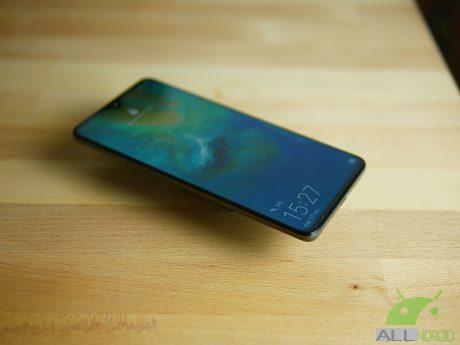
- Over 1000 Euros (premium range): smartphones that start from the base of the previous price range but add exclusive features, such as abundant memory cuts, a futuristic design, dedicated software functions or even more advanced photographic sector. They are also overpriced products, there is no escape. Buy them to be sure you have the best in your hands, but don't expect to get a very different user experience from smartphones costing 200-300 Euros less. These devices respond to specific needs and require a large economic effort, it is always a good idea to wait a few months from the launch for the purchase, you could also save 300 or 400 Euros.
2. Establish the budget
Now that you know what to get in 2019 for a certain amount, well, it's time to determine how much you want to spend.
Remember that the smartphone market does not provide a better time than others to make a purchase, but in any case, patience is a formidable ally.
During the days of special offers like Black Friday and Amazon Prime Day it's easy to find good deals but also rip-offs.
3. What do you need? The rule of 3
3 must be the areas on which not to compromise: "I from the phone want A, B and C." Determine what are the three fundamental needs that the future smartphone must meet, or in other words, the three key characteristics that it must possess. For example, my smartphone must have excellent autonomy, be fast and be beautiful.
It is useless to determine a slew of specifications or dream features, stay with your feet on the ground and ask yourself what are the really fundamental aspects. Just choose 3, it's a good way not to get lost.
In addition to the 3 key features, prepare a short list of "added values" that will come in handy when you are at the crossroads between a few models. For example: I wish it were small, I wish it were waterproof, I wish it had many accessories available and so on.
to. Design and materials
Remember that the smartphone will be one of the objects with which you will have to deal more often during the day, buying one that you do not like aesthetically is the first step to get bored quickly.
The more you spend the less there will be compromises, but it is not certain that with a low budget you cannot find something beautiful and original.

The choice of materials is of relative importance, a smartphone made of glass or metal is not in itself better than the equivalent in plastic. It is now possible to find well-built devices even just above 100 Euros. The important thing is that you like it.
A few years ago the possibility of removing and replacing the battery was considered, now this is a mirage, but keep in mind that it will tend to be easier to open a monocoque device in aluminum, rather than one completely in glass or ceramic.
Carefully evaluate the waterproofing parameter, which does not mean being able to enter water or sea with your smartphone, but is a guarantee of accurate construction and resistance to accidental infiltration of water and dust. If you plan to take your phone with you to a construction site, a workshop or very humid places, then it should be a must have.
b. Photographic sector
If you love taking pictures, know that you will pay dearly for your passion, the photographic sector is a feature that largely determines the price of the smartphone and it is difficult to establish a general rule valid for all models. However, we can give you some useful advice, as well as of course consult the online reviews to inform you about this aspect.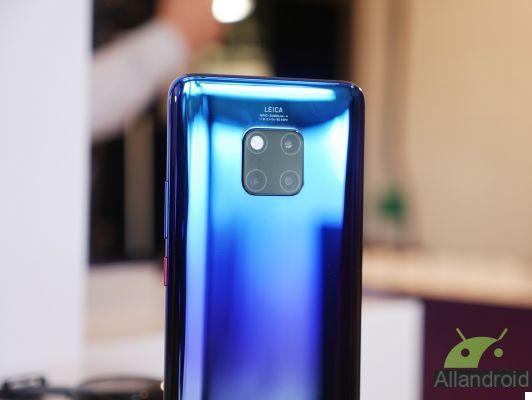
Under 300 euros it is almost impossible to find smartphones that take great photos, you will have to spend a little more and in most cases pay attention to the top of the range.
However, there are some good choices even around 350 Euros, between the top of the range of the previous year and mid-range smartphones with a focus on images.
Forget the Mega Pixels or the number of cameras, they are not enough to determine how good a camera is or not.
The second camera for the so-called "bokeh effect" works terribly on cheap products, don't even calculate it.
On the high-end you will have a small photographer and videomaker kit in your hand, at this moment Huawei and Samsung are the masters but also the flagships of OnePlus, Xiaomi, LG, HTC, OPPO and Sony are doing great.
c. Performance
Defining a lot per kilo for the performance of a smartphone is an impossible task, also because being fast or slow is all about the user's reflexes.
The general advice, however, is not to go too cheap in this sector, unless you feel perfect clumsy and think that your previous device was already too snappy.
The basic rule is that the responsiveness of a smartphone is never enough and only by trying a very fast phone will you be able to understand the quality of the user experience.
Apps are becoming more and more complex and expensive, and a smartphone that is too cheap or low-end may seem like a boulder after a few weeks.
Even if you use a few apps, mainly social, web browsing and phone, you will find that interacting with a brilliant smartphone is a pleasure.
Especially if you are young on the outside (or young on the inside), going fast with your fingers is an art that belongs to you, so finding yourself with a woody smartphone could become frustrating.
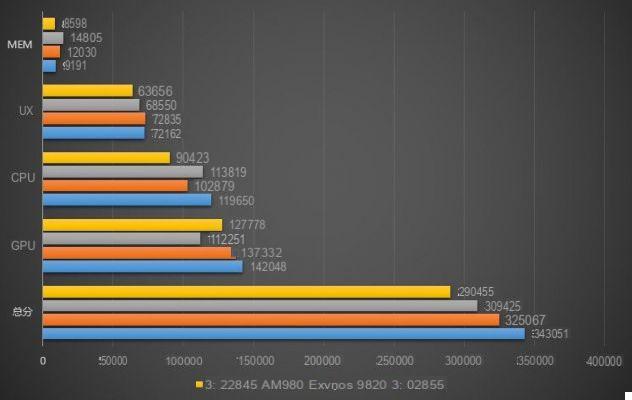
Devices between 100 and 200 Euros are not suitable for gaming and require some patience with the heavier apps and even switching from one app to another; forget about multitasking too, perhaps with multiple windows open or many apps in the background.
Above 250-300 Euros you will have a user experience already very similar to that of the top of the range, on which you gradually proceed to refinements, without however upsetting the reactivity of the system.
Then there are some smartphones famous for being snappy, the OnePlus for example, and others that despite being on the premium range do not shine for performance, the Samsung to name the most famous.
To understand what performance your smartphone will have, check the processor and the amount of RAM, these two elements will give you an idea of what you can expect.
d. Technical specifications
Do not be fooled by the numbers, the hardware platforms available on smartphones are many and varied, and the higher numbers do not always correspond to better performances, in any case check the technical data sheets of the various products on our dedicated page.

System on a chip (mobile platform)
Starting from the processor, keep in mind that there are 4 main houses that deal with the production of SoCs for the mobile world.
- Qualcomm: they are the best processors, produced by an American house that equips smartphones on all price ranges.
- Samsung Exynos: are the processors produced by Samsung for Samsung devices and a few others. Great specs but sometimes subdued.
- HiSilicon Kirin: they are the processors produced by Huawei for Honor and Huawei devices, they are few and have an excellent value for money.
- Mediatek: the house has carved out the slice of Chinese low-cost and mid-range smartphones, low-end ones are to be avoided, in the mid-range they make sense.
Qualcomm
The processors that you will find most commonly in circulation are Qualcomm, you can recognize the processor series from the first identification number. The 4 series is the low-end one, it is not very efficient and does not guarantee solid performance, it is still better than the Mediatek equivalent.
The 6 and 7 series are both mid-range and guarantee excellent performance and a good energy balance. Processors such as the Snapdragon 625/626/630/636 are very energy saving, without sacrificing too much performance, the 660/670/675 are more performing but less attentive to consumption, the 710 is a perfect example of balance between performance and energy management and the latest addition to the mid-range. Within the series, the larger number indicates the most recent production, so favor the latest arrivals rather than the previous series and refer to this list for an overview.
The 8 series is the most performing and is adopted on board the top of the range, the latest ones are Snapdragon 845 and 850.
Samsung Exynos
Samsung is focusing more and more on mid-range processors, trying to give more sparkle to the products in the entire catalog, which historically have been plagued by not exactly convincing performance due to a rich but complex to manage software. The 7 series is popular, marked by the number 78 in the first two digits of the model. The most common are Exynos 7870, 7880, 7885, all excellent on paper but a little dull in everyday operations, it is important that Samsung devices are accompanied by at least 4 GB of RAM.
In 2019 we will finally see the 9610, which is always part of the mid-range and the 7 series, it is a revised model in the production process of the various 788x, it will be built at 10 nm, more efficient, more performing and capable of supporting faster connections. and process slowmotion.
Samsung's high-end is called series 9 and has two exponents: Exynos 9810 and 9810, the latter will be installed on board the 2019 flagships.
In 2018 the 9810 failed to fully convince due to fluctuating performance and excessive consumption, we will see if the new model can redeem itself.
HiSilicon Kirin (Huawei)
Huawei doesn't make very many processors and tends to adopt the same processor for a long line of products. This approach is good because it allows you to achieve maximum optimization and refined model design. Overall, however, the high-end processors have something less than Qualcomm's direct competitors.
On the high end, the Kirin processors were the first to adopt a neural computing unit and with the latest Kirin 980, even Huawei caught up on the small shortcomings that held it back, especially in the connectivity sector (linked to the processor). .
The 600 series has become famous, mounted on board the entire medium and low range, now replaced by the 700 series, of which the first born is the Kirini 710, processor made at 12 nm and very balanced between performance and energy saving, yes halfway between the Qualcomm Snapdragon 636 and 710.
On the high end there are two proposals, the Kirin 970 and the Kirin 980, one the direct evolution of the other. There has been a great leap forward between the two models, mostly in the connections supported and in the ability to manage multiple cameras, both guarantee excellent performance and reduced consumption.The 980 is also the first processor for Android smartphones made with a production process. at 7nm,
Mediatek
Smartphones sold in our country hardly adopt Mediatek processors, when they do the results are never exciting. In particular, the low-end is preferred, with poor performance, compared to the medium and high-end which would instead guarantee a better user experience. Mediatek 6750, 6752, 6753 are common, all made at 28 nm and not very suitable for use that is not extremely basic.
More interesting are the Helio P70 and 90 which were introduced in 2018 and replace the P60 which showed good capabilities when it was adopted. Helio P22 is the most recent economic proposal presented and could be adopted en masse in 2019 on the low end, but the performances are not that great.
RAM and memory
Almost all smartphones are now equipped with at least 32 GB of internal memory and 3 GB of RAM, below these specifications avoid purchasing, unless you have strictly limited needs for telephone and messaging use.
Companies often push on the communication of expandable memory, but it is not the same thing, with less than 32 GB you will find yourself with the memory saturated in less time than expected. Aim for the 64GB denominations which are cheap and are a good compromise.
Smartphones with 4 GB of RAM are preferable, 6 GB of RAM are perfect, besides it will be pure marketing, you will not need it.
Having expandable memory is an added value but it will be less and less important in the future, thanks to the development of the cloud and free services that use it such as Google Photos or Google One.
Connections and antennas
All smartphones are equipped with Bluetooth, the newer mid-range models can count on version 5 which is more stable and allows simultaneous playback on multiple devices. If you don't have specific needs, models with version 4.2 are just fine too.
As regards the WiFi make sure that the device you aimed at supports the double frequency band, 2.4 and 5 GHz, by now more and more often you will find double-frequency WiFi networks and in these cases a smartphone that does not support them would limit you a lot.
Modern smartphones are equipped with GPS, some of the latest ones support dual frequency L1 L5, will give you greater accuracy in the city and the gap will further increase with the full operation of the GALILEO system.
The chip NFC you will need it to pay with your smartphone and for other minor functions, be careful because many low-end devices do not have them.
If you are used to the radio, adjust accordingly and remember that there are fewer and fewer smartphones equipped with an FM radio antenna.
The quality of the telephone signal and call comfort is very important but there is no one rule that applies to everyone.
Generally, poor reception is a problem now overcome, although there are smartphones better than others, remaining within the smartphones recommended on our pages, you will not have problems.
Ports and connections
The classic charging port of smartphones is the micro USB, in the last 2 years more and more manufacturers are adapting to the new Type-C connector, which unlike the predecessor allows insertion into the upside down port indifferently.

By choosing a smartphone with port Type-C, you will have the certainty of finding greater compatibility in the future, unfortunately there are still many smartphones with micro USB, it is not a drama but slowly they will disappear.
The port for the audio jack is losing ground in favor of wireless connections, check that your future purchase does not have it if you consider it an important detail, if you therefore plan to use earphones with cable or microphones.
If you intend to control the TV with your smartphone, using it as a remote control, check that your new smartphone has an IR port, there are very few who adopt it.
Display
The display of a smartphone is one of its fundamental parts, you will find yourself having to choose between two product categories: OLED and LCD.
The first type is mostly adopted on mid-range and high-end devices, while LCDs are found on all prices but especially on cheaper products.
This does not necessarily mean that an OLED screen is better than an LCD, but we can say that a high-end OLED is preferable to a high-end LCD, for 90% of users.
- LCD they have lower production costs and for this reason they are used more on cheap smartphones, it is still possible to find displays OLED on low-end Samsung products, such as LCDs on premium devices.
As for the specifications, take into account the resolution but don't worry about trying to find the highest possible resolution at all costs.
What matters is the density of pixels per inch, it goes without saying that on a small display (up to 5,5 inches) the HD resolution will be sufficient, while going up diagonally it would be better to focus on FullHD.
The resolution QHD it is relegated to the premium range and according to many it is only a waste of energy in the face of an almost imperceptible improvement in definition.
Battery and autonomy
On the battery it is a lottery, or rather, discovering the battery capacity is simple and it is also immediate to establish a threshold below which not to go down, 3000 mAh, but from there to understand what the autonomy will be is much more complex.
The autonomy of a smartphone depends on many factors, the hardware first of all, but also the software optimization, the style of use of each individual user.
On the mid and low range it is easy to run into smartphones with over 4000 mAh of battery, "quiet" processors and a screen no more than FullHD (yes, the screen is the element that has the most impact on autonomy, the larger and more defined it is and more consumes), in this case the two full days are guaranteed.
On the high end and on the premium one, however, it is very difficult to find smartphones that take you beyond the full day.
What to expect from the new smartphone in terms of autonomy? Not very much to tell the truth, now the phones are designed to take you in the evening, if they arrive at two days you can celebrate, beyond two days it is very difficult to find them.
Contour sensors
This paragraph is important if you want to spend little, less than 200 Euros to give an order of magnitude. From the medium-low range upwards, all smartphones are well equipped in terms of sensors, there is never a lack of brightness, proximity, accelerometer, gyroscope, magnetometer and often you will also find the barometer and other accessory sensors, such as the one for fingerprints. , cardio and notification LEDs.
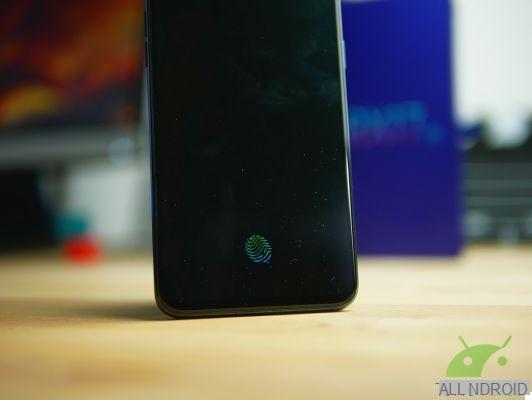
If you are aiming for something cheap, be careful, a smartphone without a brightness sensor could give you some headaches, it will not automatically adjust the brightness of the display; the absence of the gyroscope, on the other hand, will not allow you to move comfortably on foot because it will not give information on the orientation of the device.
Single sim – dual sim
Many smartphones offer the possibility of working in dual SIM configuration, but most of the time you will have to give up memory expansion with MicroSD, since the second slot is shared.
Considering the many large data offerings from virtual operators, dual SIM smartphones may be worth a preference, to be ready in the event that it becomes convenient to use two SIMs.
Remember that operator-branded phones, the so-called "branded", lose the ability to be used with two SIM cards.
And. Dimensions
Here it's up to you, but keep in mind that compact smartphones are very few and will give you few opportunities for choice and savings.
Don't make the mistake of fossilizing on the compact size, those around 5,5 or 6 inches with optimized frames are not "frying pans" and you can quickly get used to a few more cm.

You will see that a large screen will allow you to make the most of multimedia content, you will not regret it.
f. Multimedia
It is an important factor in the decision, if you plan to watch movies, TV series, YouTube videos, expect a slightly higher expense than expected.
In fact, it is rare to find low-end smartphones with excellent displays and good audio sector.
On the other hand, almost all mid-range smartphones are fine in this sense.
4. Software and Updates
The question to ask is: "How would I like my Android smartphone to be?". There are two ways and they depend on the manufacturer, who will have equipped the smartphone with a proprietary customization of the system, creating a very specific user experience.
 Pure Android: are the UXs close to the basic version of Android, you will find them on Motorola, HTC, Sony, BQ, Wiko, Nokia, OnePlus and Google products.
Pure Android: are the UXs close to the basic version of Android, you will find them on Motorola, HTC, Sony, BQ, Wiko, Nokia, OnePlus and Google products.
They are characterized by being very simple, light and with few extra functions compared to the basic Android (which however is already supplied). To these brands are added the smartphones that are part of the Android One program, they can be of all brands and are equipped with a pure version of Android, they will update quickly and guarantee a lean and fast experience.- Customization: are the UX very different from pure Android, which is used as a base, on which to build graphics and functions far from what Google has developed. You will find these ROMs on Samsung, Huawei, Honor, ASUS, LG, OPPO devices and each UX will be completely different from the others.
The advantage of this approach is to provide from the first start, a smartphone ready for anything, with many functions, customization possibilities and pre-installed applications. The downside is that such rich software could be confusing and burdening the system, making smartphones without adequate hardware very slow.
Getting updates on your phone is a good thing, but it's not as necessary as you might imagine. In fact, cases where a new update has created more problems than advantages are not rare, especially on cheap smartphones. So don't get caught up in the update craze, or rather, do it only if you have spent 300 euros more, otherwise it is wasted effort.
How quickly you can receive updates depends on many factors, some brands are faster than others, but there are some rules of thumb to keep in mind.
- Branded smartphones, that is sold with the operator's brand, are much slower in receiving updates, they can spend months compared to the no-brand equivalent.
- Low-end smartphones get few updates when they do.
5. Brand
The choice of the brand has its weight, if you are fond of a house it is normal to have an eye for its proposals and it is still right to prefer continuity.
Our advice, however, is not to focus too much on the manufacturer, now all brands, with ups and downs, are able to create excellent smartphones.
Chinese manufacturers such as Xiaomi and OPPO are appearing on the market, which will give you the guarantee of a purchase with excellent value for money.
In recent years, Huawei and Honor have conquered considerable slices of the market and have earned the trust of buyers with excellent products, mitigating the excessive power of Samsung, which nevertheless continues to be the most chosen logo in the world.
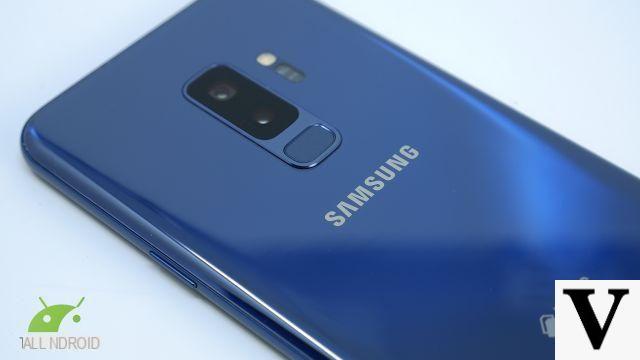
LG, HTC and Sony, on the other hand, have lost a bit of authority in the mid and low range, while they remain excellent options for the high end, the same is also true for the Pixel, Google's smartphones, beautiful but very expensive.
For some time ASUS has been putting on the market very good smartphones, the Zenfone, which stand out for their design, good performance and in some cases fantastic autonomy.
Motorola is no longer what it used to be but the Moto G series is a real cult and punctually manages to enter our buying guides.
BQ and Wiko also deserve a place in this paragraph, which go a bit in fits and starts, between really valid smartphones and other disreputable ones.

Finally, a mention goes to the gaming smartphones of Razer, ASUS and Nubia, all interesting proposals and for the slightly niche but very innovative oriental names, such as Vivo, which does not officially sell in the country but always teases us with innovative smartphones.
If you are very undecided, we advise you to stick to these names, without venturing into lesser known brands, unless you are perfectly aware of what you are buying.
6. Modding
It is worth taking into consideration the modding hypothesis, that is the series of software changes that can be made to Android smartphones in a more or less radical way.
If you are a bit of a geek and don't mind trying your hand at this kind of modification, then there are some useful tips we can give you.

Do not buy a Huawei, Honor or Samsung smartphone, they are the most closed systems and for which there is little or nothing in terms of modifications and custom ROMs.
Favorite Xiaomi or OnePlus device, absolutely the most supported by the community, even in several years you may be able to get the latest version of the green robot and in any case greatly improve the capabilities of your smartphone. All you need is a little time and the desire to get your hands dirty.
7. Accessories
If you love to embellish your device with accessories then you must keep in mind that the gadget park is large only for certain models, mostly high-end. Covers, films, skins, photographic lenses, protections, are available in large quantities for all top of the Samsung range, for Google, OnePlus devices and for some Xiaomi, LG and Huawei devices.
The proposals for HTC, Motorola, ASUS, Sony, BQ, OPPO and HONOR are scarce.
In general, the best covered low-end products are those of Samsung or Huawei and HONOR, while for other brands it will be difficult to find interesting accessories.




